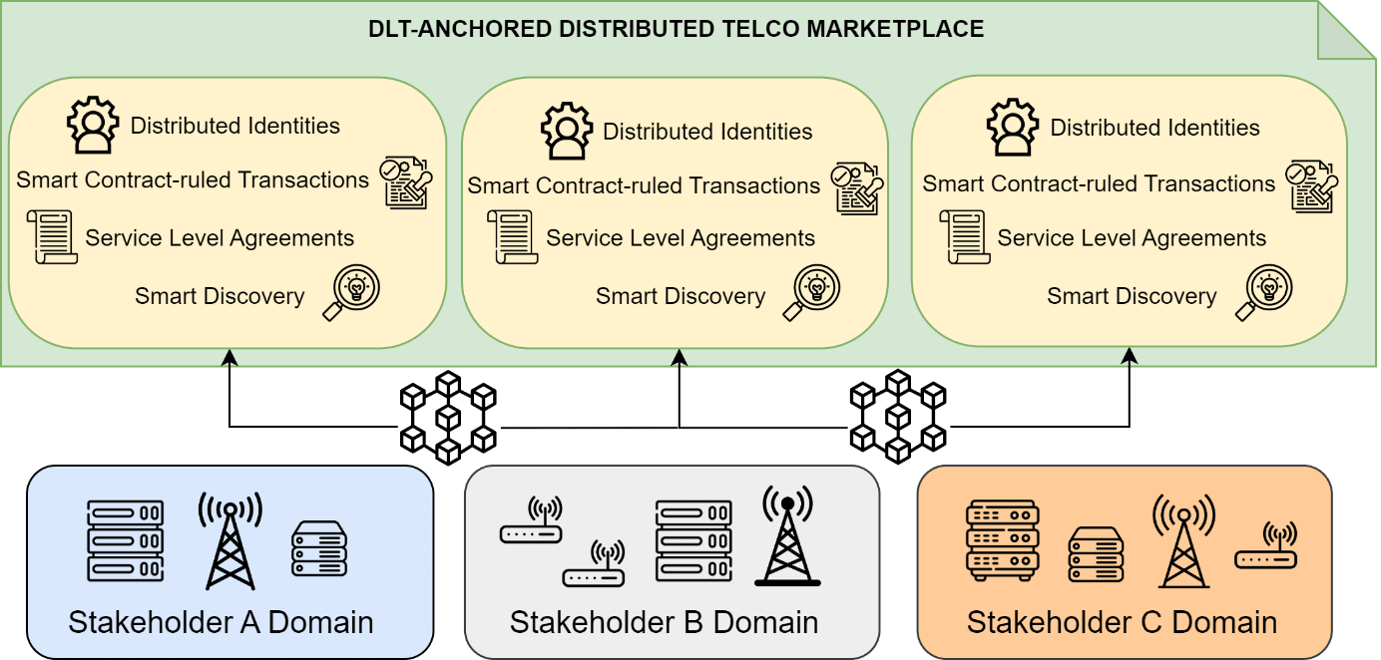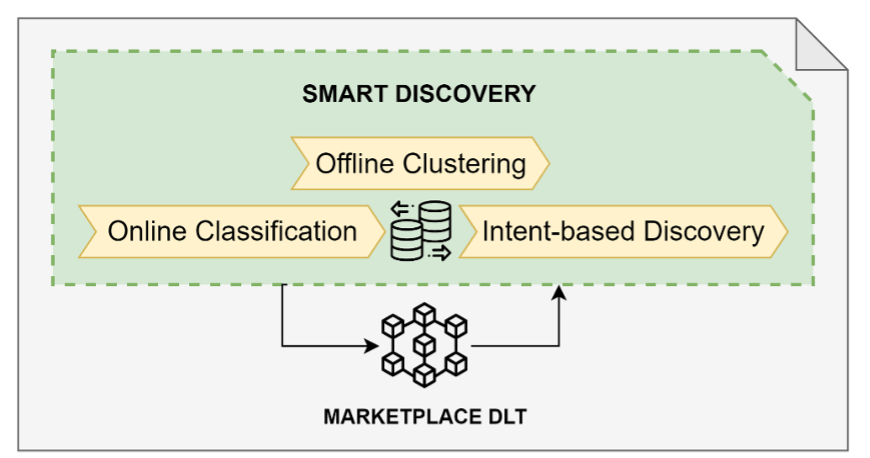
Keep up to date with our innovative initiatives.
Sign up here
To ensure that future networks align with the diverse needs of applications and users, the paradigm shift towards Telecom Marketplaces necessitates the active involvement of a variety of stakeholders. These stakeholders range from equipment vendors to network operators, cloud and service providers, and application developers. However, the seamless integration of these diverse entities and the facilitation of multipurpose services within a unified environment poses significant challenges. Challenges include heightened operational complexity, as well as concerns related to privacy and trust within the evolving telecommunications landscape.
Addressing these challenges requires the establishment of resilient distributed Marketplaces that enable the effective sharing of network resources and services among stakeholders. Central to this endeavor is the development of automation methods that play a pivotal role in classifying and identifying accessible offers with efficiency and accuracy. In the 6GENABLERS Marketplace, a Smart Discovery service has been introduced to ensure the efficient and reliable operation of the platform. Smart Discovery is responsible for matching consumer intents with resource and service offers available within the Marketplace.

This innovative component seeks to enable programmatic and intent-driven offer discovery by leveraging advanced selection methodologies rooted in ML paradigms. By harnessing these techniques, this service aims to streamline the process of identifying and acquiring a tailored subset of offered network resources and services that precisely align with the consumer’s requirements and expectations, helping consumers find the most appropriate offerings. This makes it easier for users to express their needs and preferences in a way that the system can understand, including various attributes such as location, technical specifications, pricing, and other relevant factors.
At its core, the Smart Discovery component is geared towards two pivotal objectives: the intelligent establishment of relationships within offers and the translation of users’ high-level discovery intents. In pursuit of these objectives, this module leverages data clustering methodologies, which pool resources together, based on the identification of common features. In this way, real-time predictions are performed to group incoming offers regarding their affiliation with one of the established clusters. Moreover, this module offers an Application Programming Interface (API) that provides intent-based assistance, harnessed in tandem with clustering and classification models to realize resource discovery of a highly intelligent nature. In a nutshell, the module focuses on deciphering keywords within the provided intention and converting them into distinct groups or classes.

The internal architecture of the Smart Discovery component comprises three main functional entities. These entities collectively rely on a suite of databases, serving as repositories for data exchange and storage. This repository encompasses essential information concerning for instance the ML models, clusters features, and standard deviation. Notably, these stored clusters features, and standard deviation are subsequently leveraged by the intent-based subcomponent to effectively map users’ requests to classified offers.
These mechanisms collaborate within the Smart Discovery component, collectively culminating in an intelligent and dynamic system that adeptly identifies patterns, categorizes offers and comprehends and acts upon user intentions. Thus, facilitating a streamlined and responsive interaction between users and the 6GENABLERS Marketplace.
Author: Adriana Fernández-Fernández, PhD – Senior Researcher, Software Networks, i2CAT Foundation